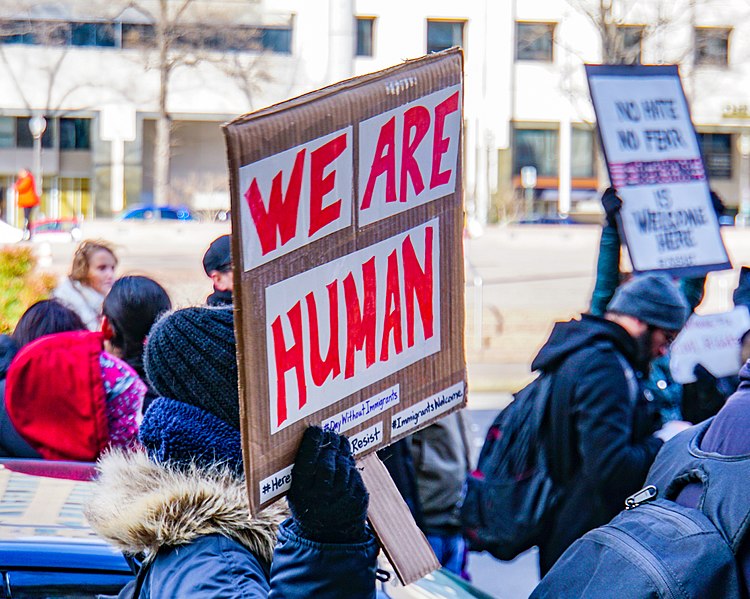
Between January and March 2023, 441 deaths have been recorded in the Central Mediterranean. According to the International Organization for Migration’s Missing Migrants project, 28,217 disappearances have been recorded in the Mediterranean since 2014, making it one of the most dangerous migratory routes in the world along with the route between Mexico and the United States. In mid-2023, the Canary route has been reactivated, from more distant origins than in previous years, increasing the risk of the journey. Meanwhile, measures to “order” migratory flows continue to leave a counterpart of grey zones, spaces where death takes form everyday, at the same time as the proliferation of securitarian narratives functional to the narratives of hate.
The strategy to “effectively manage” the access to European borders is embodied in the New Pact on Migration and Asylum, agreed on 20 December 2023. The European Union, which in recent years has seen the anti-immigration narrative that was widespread within certain political sectors, the New Pact takes up a management structure that adheres to the most unwelcoming interpretative frameworks, justifying its position on management and order, and identifying people-smuggling mafias as the main enemy against which to “protect” migrants. Words such as “security” or “fear” are repeated like a mantra, in a historical context marked by conflicts that have disrupted the supposed return to normality of a post-pandemic crisis. “Security” and “fear”, two concepts that predispose us to an attitude linked to an “other”, during the Covid-19 pandemic, security in the face of contagion, fear of the virus; during the post-pandemic, security in the face of the “other”, fear of its own existence as a “co-inhabitant”.
The contempt for the “other”, homogenised in the worst fears of a society that aims to scale in the hierarchical structure of exclusion, has become the key to increasingly securitarian policies that seek to stop migration before it takes place, a veritable oxymoron on which the new vision of order is based.
Within the narrative of order, the dichotomy of migrant-refugee is exploited everyday. This dichotomy, based on the “voluntary” or “forced” nature of displacement, without going into what can be understood as “voluntary” in a context of extreme economic need, has given way in recent years to a narrative promoting mistrust, based on the premise that the displaced population lies and “takes advantage” of the asylum system, drawing a scale where the unwanted “other” is constructed as a usurper of a position that does not correspond to him or her. Thus, mistrust acts in coordination with increasingly restrictive mobility practices, with a filtering management: first preventing people from leaving their territories, then preventing people from arriving, and finally, if they have overcome all the previous obstacles, preventing people from staying. This is how we come to understand the presence of Frontex in Africa, the refoulement on the high seas, or the transfer of people to territory outside the EU, as proposed in the agreement between Italy and Albania.
The migrant-refugee dichotomy, has become a functional tool of narrative of hate, claiming that asylum seekers are not “real” refugees, but rather economic migrants who obstruct the proper functioning of the protection system. The case of the recognition of temporary protection for people from Ukraine was very helpful to this narrative, not only because it supported them in their logic of “genuine” refugees fleeing a declared war, but also because this same directive was not adopted before or towards other current conflicts. In the same case of people from Ukraine, we could see how the Roma community was branded as taking advantage of temporary protection, considering that they were actually economic migrants, even though they also came from the same regions from which the rest of the Ukrainian population was fleeing, suffering great discrimination in the neighbouring countries where they arrived. Extreme right-wing populist narratives have strengthened their prominence by constructing the “other” as a menace, in which this menace is constructed from a racist and classist perspective. Irregular arrivals via the Mediterranean, the Canary Islands route or the eastern route are the fundamental elements that come together to reinforce these positions, presenting a criminalisation of mobility, completely ignoring the fact that the possibilities of regular migration have been reduced to their minumum expression.
Hate narratives find in anti-immigration policies based on securitisation an ideal framework for proposing even stronger limitation of rights towards people on the move. These narratives would not gain presence if there were no framework of possibility for hate, they would not succeed if rights were unquestionable, if the position based on exclusion as a norm were not reinforced everyday. Far-right populism, appeals to emotions, to the defence of “values” that it molds to its convenience in order to reinforce its ethnocentrism. Italy, Sweden, Finland, and recently the Netherlands, among others, are examples of how the extreme right has supported itself on these narratives to enter parliaments and even govern, which brings with it not only the intrinsic risk of them fulfilling their xenophobic and anti-immigration agenda, but also the normalisation of such narratives within the public sphere. The New Pact on Migration and Asylum partly reflects this situation. The fight against human trafficking mafias and the efficient and humane management of migration are two of the main narrative supports that are lost in the strategies and subterfuges to prevent certain people from leaving their territories, to prevent them from arriving, and to prevent them from staying.
The political agenda has incorporated migration as a “problem to be managed” or a “problem to be eliminated” as two sides of the colonial-capitalist stance that permeates the current vision of human mobility. The two positions are presented as opposing, although in practice they act concomitantly, moving the ground for the implementation of their anti-immigration policies to areas where the positions defending the rights of human mobility encounter the greatest obstacles. From this fact derives a supplementary measure, the criminalisation of solidarity, guaranteeing a single reading of events at the border, but also positioning itself as a plenipotentiary actor.
Indifference is palpable in the face of what is not seen, or does not want to be seen, that which is distant, out of “jurisdiction” or comprehension. The narrative of protecting migrants from mafias easily offers a minimally comfortable framework from which to justify these practices that promote immobilities. Rejection takes shape thanks to the narrative of mistrust and the constructed role of the migrant usurper of the refugee category; rejection is justified by the saturation of asylum systems, evidencing the need to prevent them from arriving in territory with border procedures that accelerate the processing of an application and enable rapid returns of people whose applications “with little chance of being accepted must be examined quickly without the need to legally enter the territory of the Member State”. Finally, fear emerges, a visceral feeling that tries to appeal to the survival instinct mobilised from an increasingly explicit xenophobia. The “other”, the one who has arrived despite all the obstacles, is constructed as a monstrosity that defies all the frameworks of order, that challenges the ordinary management of mobility and therefore has to mobilise extraordinary means. The “other” as a monstrosity is a menace to order that justifies the recourse to security policies that reinforce the logics of filtering, so that people do not arrive, so that people do not stay.
The narratives of hate present the subject in mobility as a transgressor of the border in order to usurp the position of refugee. The colonial-capitalist vision denies the forced condition of displacement, consequently denies recognition because it considers that they usurp a category that does not correspond to them, and finally denies their existence as a subject of international protection. Faced with this process of dehumanisation, the management proposals present a matrix of exclusion based on the ordering of mobility and a greater reinforcement of the control of flows, where fear and rejection are narratively focused on the human trafficking mafias, while in practice undesired mobility is restricted from the same colonial-capitalist perspective. Between the interpretation of a displacement as voluntary or forced, between the reading of a subject as a “usurper” migrant or a refugee, and between the perspective of eliminating or managing, there is the intention of constructing a gradient of expulsions in which both positions mutually feed back on each other.
—
Ivana Belén Ruiz-Estramil
Beneficiary of a grant from the Postdoctoral Programme for the Improvement of Doctoral Research Staff of the Basque Government. Visiting Postdoctoral Researcher at the Centro de Estudos Sociais (CES) of the University of Coimbra; ascribed to the Hegoa Institute, University of the Basque Country/Euskal Herriko Unibertsitatea.
Source: Alice News

